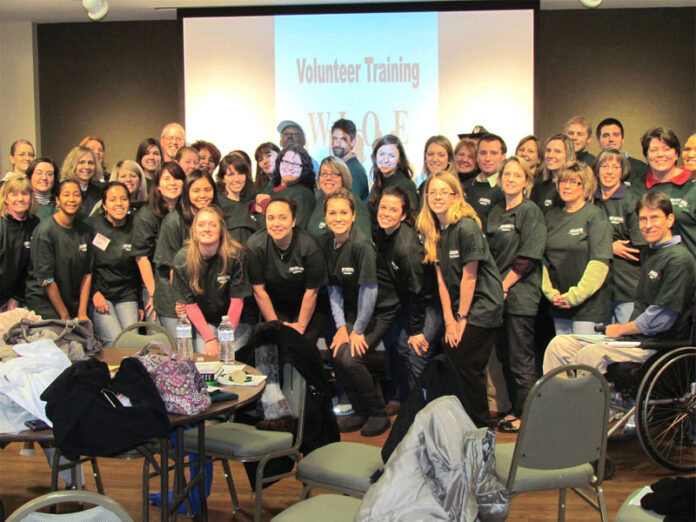
Forty dedicated volunteers assembled at Green Memorial Methodist Church Sunday afternoon for a two-hour training session preparing them to hit the streets Monday morning. Some of the six teams started as early as 4 a.m., with a cup of Starbucks coffee and a donut.
The annual Point In Time (PIT) count of the homeless is being conducted this week. The PIT count obtains baseline demographic information about the homeless population in Virginia, explained Karen Michalski-Karney with the Blue Ridge Independent Living Center.
They are canvassing Roanoke’s streets and shelters, taking with them a Vulnerability Index survey for the first time this year. Each client they encounter is asked 27 survey questions. They expect to encounter not only men but also women with children and entire families, explained Carol Tuning with Roanoke City Human Services.
This is the first year for the Virginia Coalition to End Homelessness project, “1000 Homes for 1000 Virginians.” It is an effort to find and place the most vulnerable, medically at risk, long-term homeless individuals into permanent households across the area.
“A lot of people don’t know what to do [with them],” said Tuning.
The City of Roanoke has partnered with local agencies including Blue Ridge Independent Living Center, Trust House, Council of Community Services, Blue Ridge Behavioral Healthcare, the VA Medical Center and Jefferson College of Health Sciences.
The Vulnerability Index survey goes further then the annual PIT count by prioritizing those individuals that have been homeless the longest and are the most vulnerable. They started creating a by-name registry of those living on the streets and in shelters.
The volunteers are canvassing the Rescue Mission, RAM House, Turning Point, parks, the library and Roanoke City and County jails among other locations. The abandoned Ukrops building has multiple areas where the homeless call home. The open underground parking area is a favorite spot to camp.
Each team has a site coordinator armed with a backpack. Besides flashlights, maps and clipboards they have McDonald coupons for the hungry, condoms to pass out and an air horn. To ensure volunteer safety unmarked patrol cars are patrolling in the area. One blast of the air horn brings an officer to any out-of-hand situation.
At Sunday’s training session Tuning was urged to demonstrate what looked like an innocuous small toy-like horn. They soon heard an ear piercing blast that could have awaken the dead.
The survey is completely confidential. A consent form is read to the clients. If there is resistance to the survey then volunteers were instructed not to push it. They can slightly jostle someone sleeping but if not awakened then they should be left alone.
Judy Lash with the Jefferson College of Health Sciences went over the survey that determines the Vulnerability Index. Many of the volunteers for the week come from the college. The survey will ask for the client’s name, date of birth (month/year), social security number and they take a picture. They are asked medical questions from a list of ailments including HIV/AIDS and substance abuse. They determine if the individual is a military veteran, homeless due to domestic violence or is mentally impaired.
Tuning told volunteers if asked what the survey is for to tell them, “we’re here to count the number so we can help to get additional resources into the community.” They will be asked where they first became homeless. “City council always wants to know that,” she said. Other questions include where they slept, had they been denied shelter, how they make money, level of education, looking for work, how they get around, where they go for medical treatment and if there is a child they will be asked if they are in school.
There is a comments section – Tuning said, “some don’t want to talk and others will not only talk but you can expect to hear some cuss words too.”
The accumulated data helps the city learn not only the number of homeless but how, when and where they became homeless. The data will guide the city in an effort to reduce chronic homelessness in the Roanoke Valley.
A summary of survey findings will be presented to Roanoke City Council in March and made available to the public on the Roanoke City and Community Services websites.
The campaign is a ten-year plan called “A Place to Call Home, Ending Homelessness 10 at a Time.” These words are emblazoned on volunteers dark green T-shirts. Roanoke is one of nine communities in the Commonwealth to adopt this strategy to house the most medically vulnerable by 2013.


